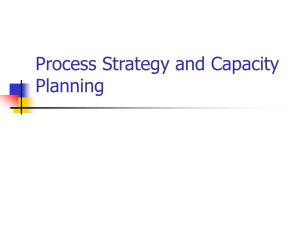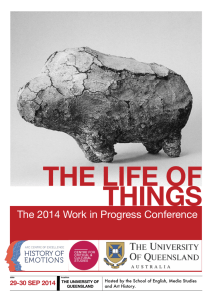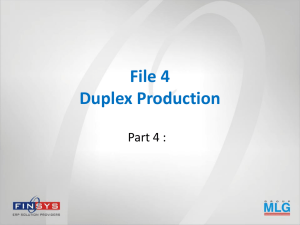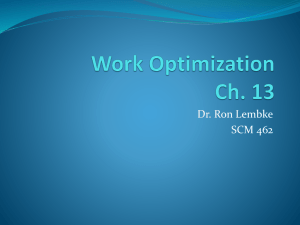course slides
advertisement
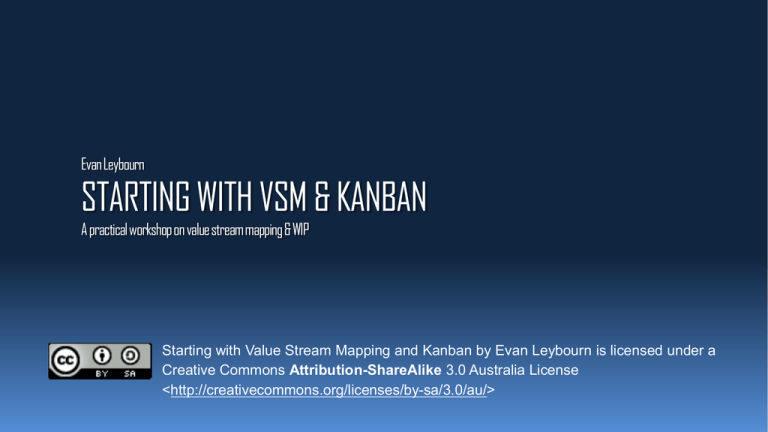
Evan Leybourn STARTING WITH VSM & KANBAN A practical workshop on value stream mapping & WIP Starting with Value Stream Mapping and Kanban by Evan Leybourn is licensed under a Creative Commons Attribution-ShareAlike 3.0 Australia License <http://creativecommons.org/licenses/by-sa/3.0/au/> Evan Leybourn lean / agile business leader and author Singapore @eleybourn http://theagiledirector.com CLICK TO DISCOVER MORE agile waterfall Waterfall (Incrementing) Agile (Iterating) Images with thanks from Jeff Patton: http://www.agileproductdesign.com/ individuals and interactions over processes and tools working software over comprehensive documentation customer collaboration over contract negotiation responding to change over following a plan 1. eliminate waste 2. amplify learning 3. decide as late as possible 4. deliver as fast as possible 5. empower the team 6. build integrity in 7. see the whole mura: unevenness muri: overburden muda: waste understanding waste the 7 wastes transport inventory motion waiting overproduction over processing defects agile business intelligence part 2: flow value stream mapping defines the ‘as-is’ steps & roles for each task value add (va) time spent on outcomes for the customer non-value add (nva) time spent between steps 1. gather preliminary information 2. product quantity routing analysis 3. group customers and materials 4. sort product families by sequence 5. choose one value stream to start 6. create an operations flow chart 7. walk the shop floor 8. collect the data 9. construct the vsm 10. summarize the data to get the big picture identify, isolate and define the process measure the average va and nva calculate your process efficiency = (va / va + nva) what is kanban (かんばん) workflow monitoring & visualisation 1. visualise (card wall) 2. limit wip 3. manage flow 4. make policies explicit 5. feedback loops 6. improve collaboratively kanbanifyyour vsm - merge 0’s - define board policies - calculate wip work in progress limit concurrent work and promote workflow min throughput is usually = team size if your efficiency was 100%, how many “x” could you do simultaneously? what is your total wip total wip = min throughput / efficiency e.g. 7/55% ~= 13 Assuming a software team a 7 (not pairing) calculate % effort per state % effort = state va / total va e.g. 4 / 14.5 ~= 28% proportion wipby state wip = total wip * % effort e.g. 13 * 28% ~= 4 proportion wipby state design wip = 2 develop wip = 7 test wip = 4 deploy wip = 0 = 1 “pull” all ready tasks to wip limit pull class of service expedite fixed delivery intangible class tasks with upstream dependencies blocked identify & resolve bottlenecks through low wip limits and strict process flow production levelling constant rate of flow through all states cycle time average time to complete a task from start lead time average time to complete a task from request progress monitoring cumulative flow diagram statistical run chart burndown/up chart plot delivered functionality against duration effort visualisation cumulative flow diagram bottleneck poor flow large wip long lead time plateau plot cycle time against average duration visualisation cycle time run charts process trend process shift extreme process variation effort visualisation plot delivered functionality against velocity velocity how much work can be delivered per iteration burnup chart burndown chart discovery scope creep plateau too many features tracking epics inspect and adapt kaizen (改善) what went well? retrospective / quality circle add actionable tasks to the backlog what could be improved? kaizen emphasises teamwork, discipline & morale 1. do not send defective products to the subsequent process 2. the subsequent process comes to withdraw only what is needed 3. produce only the exact quantity withdrawn by the subsequent process 4. equalise, or level, the production 5. kanban is a means to fine tuning 6. stabilize and rationalize the process http://agilebusinessmanagement.o rg - Case Studies - Articles - Community Join our Agile Journey To learn more, check out Directing the Agile Organisation by Evan Leybourn available at Amazon and all good book stores CLICK TO DISCOVER MORE

